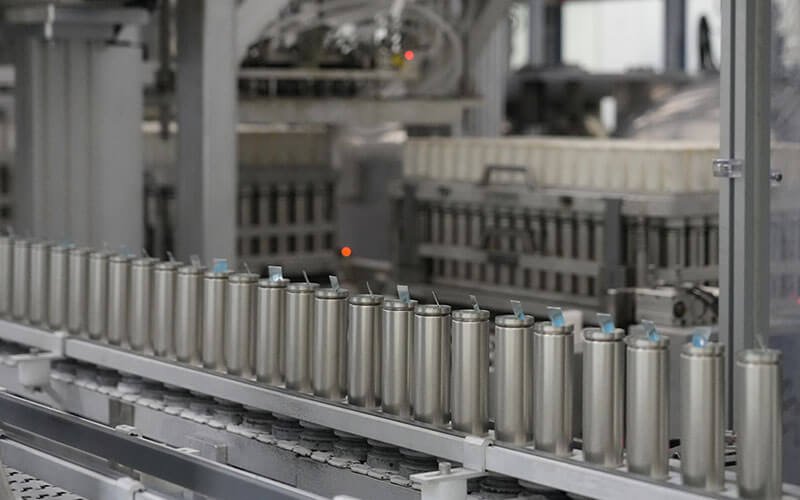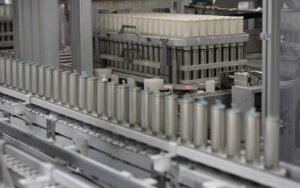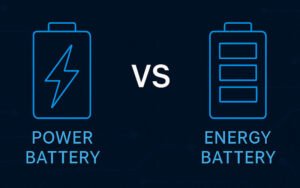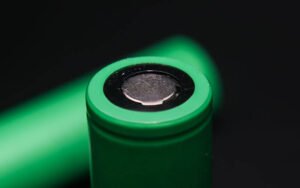PART 1
Why Battery Grading Matters in the LiFePO4 Supply Chain?
As demand for lithium iron phosphate (LiFePO4 or LFP) batteries continues to grow in applications like electric vehicles, solar energy storage, and industrial equipment, buyers face an increasingly complex market. One of the most critical—and often misunderstood—factors in choosing the right battery is cell grading.
Whether you’re sourcing for large-scale battery packs or DIY power systems, understanding the difference between Grade A, B, and C cells can be the difference between success and expensive failure.
Battery grading directly affects:
● Performance stability
● Cycle life and degradation rate
● System safety and compliance
● Total cost of ownership (TCO)
Unfortunately, misleading labeling and inconsistent quality standards are common in global markets. Some suppliers promote Grade B or even Grade C cells as “Grade A,” often without proper testing, traceability, or warranty. For overseas buyers without technical expertise or on-site inspection, this creates serious risks.
In this guide, we break down everything you need to know about LiFePO4 battery grades—what they mean, how they’re classified, and how to protect your investment.

PART 2
What Really Separates Grade A, B, and C LiFePO4 Batteries?
While many sellers claim to offer “Grade A” batteries, the reality is that battery grades are not governed by a universal standard. Instead, grading is typically determined by the cell manufacturer during quality control and sorting processes after production. That’s why it’s essential to understand the real differences between Grade A, B, and C cells—beyond just price or appearance.
Here’s how they compare across key parameters:
| Parameter | Grade A | Grade B | Grade C |
|---|---|---|---|
| Capacity Deviation | ±2% or less | ±5–10% | >10%, often unstable |
| Internal Resistance | Low and consistent (<1.5 mΩ typical) | Higher, may vary significantly | Very high, often inconsistent |
| Voltage Consistency | Tight batch matching (e.g., 3.200V ±0.005V) | Wider voltage range within batch | Inconsistent, even between paired cells |
| Cycle Life | Full rated lifespan (e.g., >3,000 cycles) | Shortened cycle life due to aging or imperfections | Severely reduced cycle life |
| Manufacturing Origin | Direct from Tier-1 production line | May be from rejected batches or excess stock | May include second-hand, recycled, or failed cells |
| Certifications | Usually includes UN38.3, MSDS, IEC, etc. | Often lacks complete certification | Rarely certified or traceable |
| Warranty Support | Yes (limited or full depending on supplier) | Rare or conditional | None |
Grade A: Premium Performance, Highest Reliability
These are brand-new cells from the primary production line of certified manufacturers. Grade A cells are rigorously tested for electrical performance and cosmetic integrity. They offer consistent voltage, tight capacity tolerances, and the longest cycle life. These are the cells used in electric vehicles, high-end energy storage systems, and certified battery packs.
Grade B: Functional but Compromised
Grade B cells are typically functional but may come from:
● Batches that didn’t meet strict EV or OEM standards
● Stock that was stored too long and began to age
● Cells with minor cosmetic or electrical inconsistencies
While they can still be used for non-critical or budget applications, they should be purchased with caution and verified through testing reports or sample inspection.
Grade C: High Risk, Low Return
Grade C cells are usually:
● Recycled or second-hand cells
● Failed quality tests during manufacturing
● Collected from returned or disassembled battery packs
These cells have unpredictable performance and safety risks, making them unsuitable for most commercial applications. They may be appealing due to low cost, but hidden dangers can result in system failure, overheating, or even fire.

PART 3
Inside the Factory: How Cells Get Graded During Production
Battery cell grading isn’t arbitrary—it’s the result of automated testing and strict quality control applied at multiple stages of the manufacturing process. To understand the meaning of “Grade A,” “Grade B,” or “Grade C,” it’s important to see how LiFePO4 cells are actually evaluated in a production environment.
Step 1: Post-Production Testing
Once cells are manufactured and assembled, they undergo a series of tests to evaluate key electrical properties:
● Open-circuit voltage (OCV)
● Capacity (Ah)
● Internal resistance (mΩ)
● Self-discharge rate
● Voltage response under load
These tests are usually done using automated sorting machines to ensure consistent measurements across thousands of units.
Step 2: Sorting and Binning
Based on the test data, cells are grouped into different “bins” depending on how closely they match factory specifications. Top-tier results (tight voltage and capacity tolerance, low internal resistance) are labeled Grade A and reserved for high-performance applications or direct shipment to OEM customers.
Cells that still function but fall slightly outside tolerance levels—due to:
● Minor capacity deviation
● Higher internal resistance
● Surface defects or spot welding marks
Are often sorted as Grade B.
Any cells that:
● Fail capacity or voltage thresholds
● Show high self-discharge
● Display signs of electrolyte leakage or internal damage
Are marked as Grade C or rejected entirely.
Step 3: Packaging, Labeling, and Traceability
Only Grade A cells typically receive:
● Official barcode labels or QR codes for traceability
● Manufacturer’s test report
● Certificates such as 3, MSDS, RoHS, or IEC62133
Grade B or C cells may be sold as bulk stock, without proper documentation—making it difficult for overseas buyers to verify authenticity or batch history.
Not All Suppliers Follow the Same Standards
Some trading companies or low-end factories may re-label Grade B cells as “Grade A” to command higher prices. In worse cases, disassembled cells from old battery packs may be rewrapped and sold as new.
That’s why it’s critical to work with a supplier who can provide test reports, batch traceability, and warranty terms—not just verbal promises.
PART 4
Why TRUE Grade A Costs More — And Saves More Over Time?
Buyers new to the battery market often ask, “Why are some Grade A LiFePO4 cells so much more expensive than others?” The short answer is simple: they are genuinely different. When you purchase true Grade A cells, you’re investing in more than just energy capacity—you’re buying reliability, consistency, and long-term peace of mind.
Superior Materials and Precision Manufacturing
Grade A cells are produced on high-end, automated lines that follow strict quality control standards. Laser welding, advanced electrolyte formulations, and precisely applied cathode and anode coatings result in outstanding performance. These processes ensure longer cycle life, lower self-discharge rates, and stable thermal behavior, even under demanding conditions.
Lower Risk of Failure and Replacement
High-grade materials and manufacturing precision reduce the likelihood of premature degradation, voltage imbalance, or thermal runaway. As a result, Grade A cells help minimize downtime, lower your maintenance costs, and improve long-term reliability—especially critical for OEMs and integrators building scalable systems.
Consistent Performance Means Easier Pack Assembly
Because Grade A cells are tightly matched in terms of voltage and internal resistance, they simplify the design and integration of battery management systems. This consistency reduces engineering effort, speeds up production timelines, and cuts down on warranty claims due to imbalance or early failure.
Export Compliance and Global Certification
Many countries enforce strict import regulations requiring UN38.3, MSDS, and IEC certification. Grade A cells are far more likely to meet these standards, ensuring smoother customs clearance and eligibility for insurance coverage. Choosing certified batteries also helps you avoid delays, fines, and legal complications when exporting internationally.
How TENMAX Helps You Source Smarter
At TENMAX, we specialize in Grade A LiFePO4 cells manufacturing like 32140, 32700, 18650, and 21700, with:
● Batch-level OCV/IR testing
● Optional custom packs with matched BMS
● Transparent supply chain and warranty support
You don’t just get a battery—you get confidence, performance, and long-term value.
PART 5
Summary: Choosing the Right Grade for Your Battery Project
Choosing the right grade of LiFePO4 cell isn’t just a technical decision—it’s a strategic one that impacts performance, safety, and long-term cost. Understanding the difference between Grade A, B, and C cells helps you avoid costly mistakes and source batteries that truly match your application.
| Grade | Quality | Best For | Risk Level |
|---|---|---|---|
| Grade A | Premium – full capacity, low IR, long life | EVs, ESS, solar, OEM, certified systems | ✅ Low risk |
| Grade B | Acceptable – minor defects or variance | DIY, low-current use, budget-limited projects | ⚠ Medium risk |
| Grade C | Reject-level – reused, degraded, or damaged | Not recommended | ❌ High risk |
Final Recommendations
● Always ask for original test data, including OCV, IR, and capacity reports.
● Verify the supplier’s traceability and warranty terms.
● Don’t be fooled by low prices claiming “Grade A” without proper documentation.
● If you’re unsure, request a small sample order and test independently.




